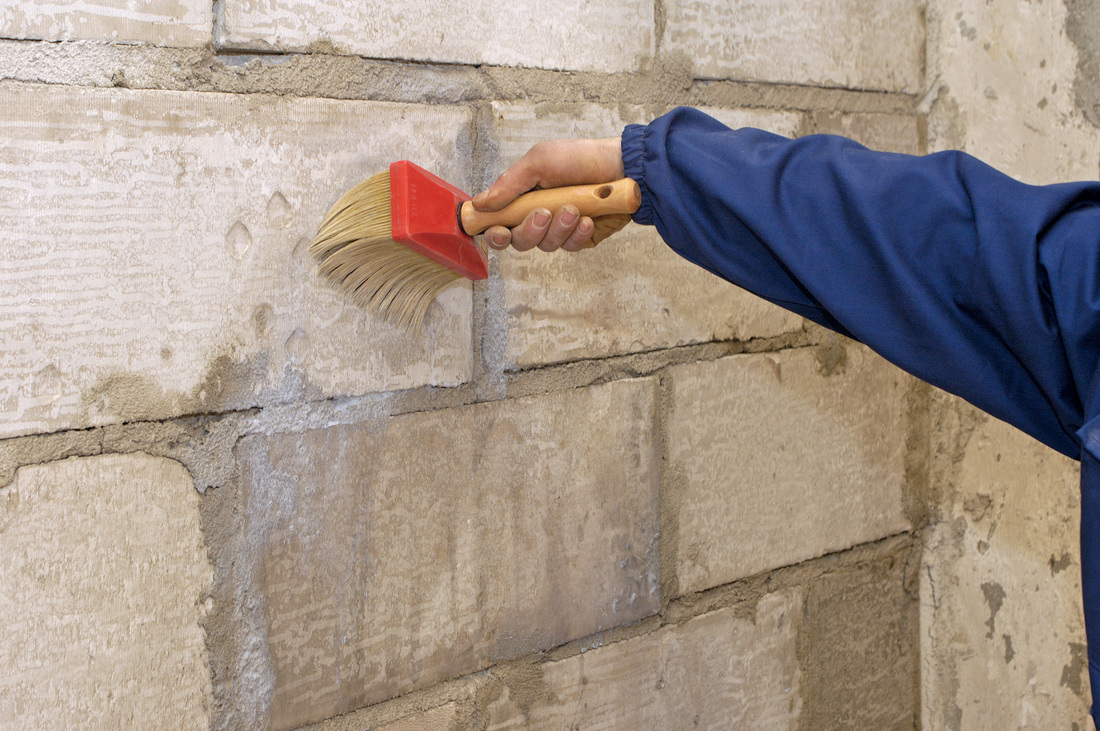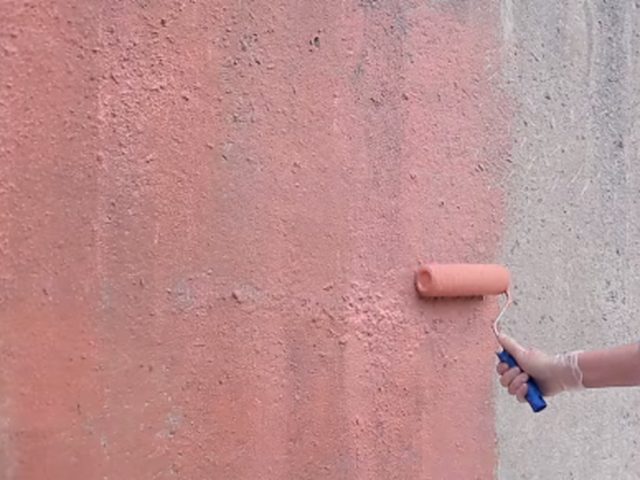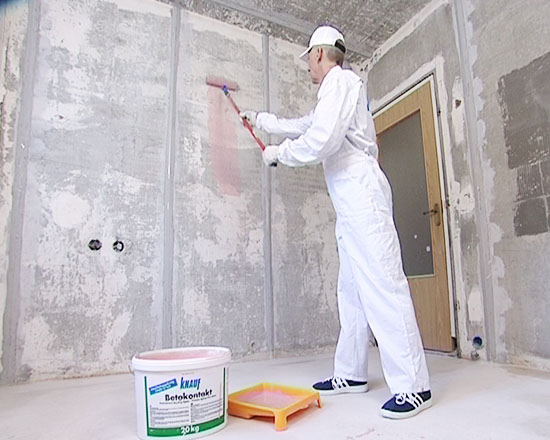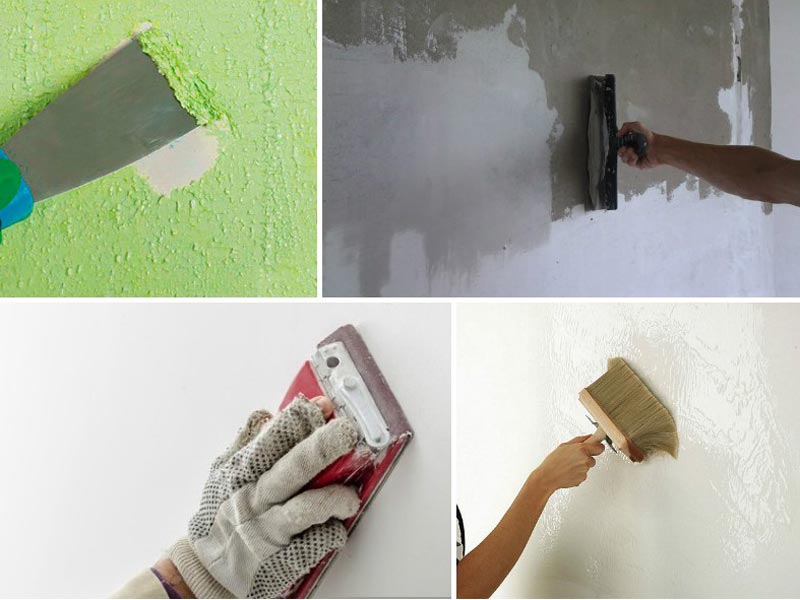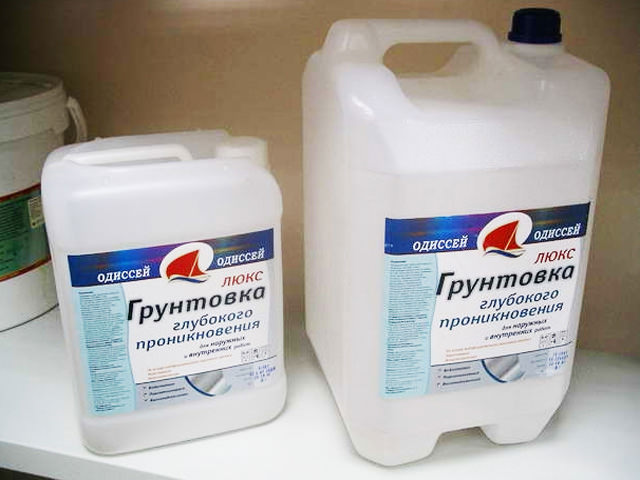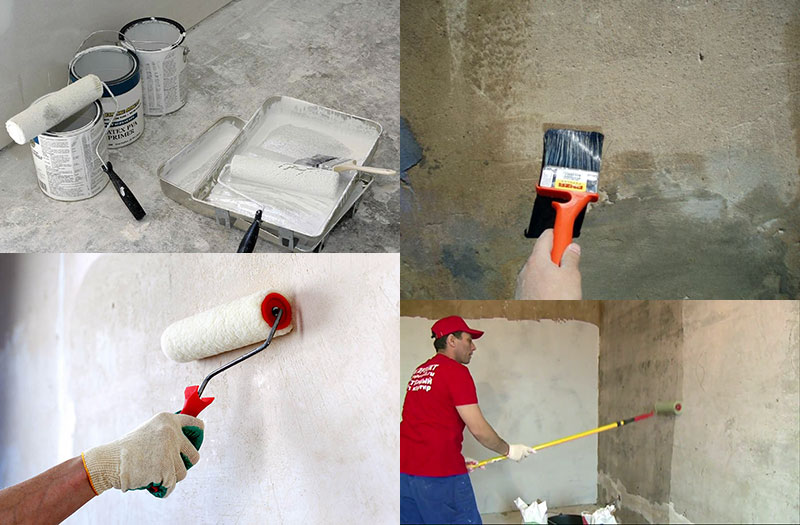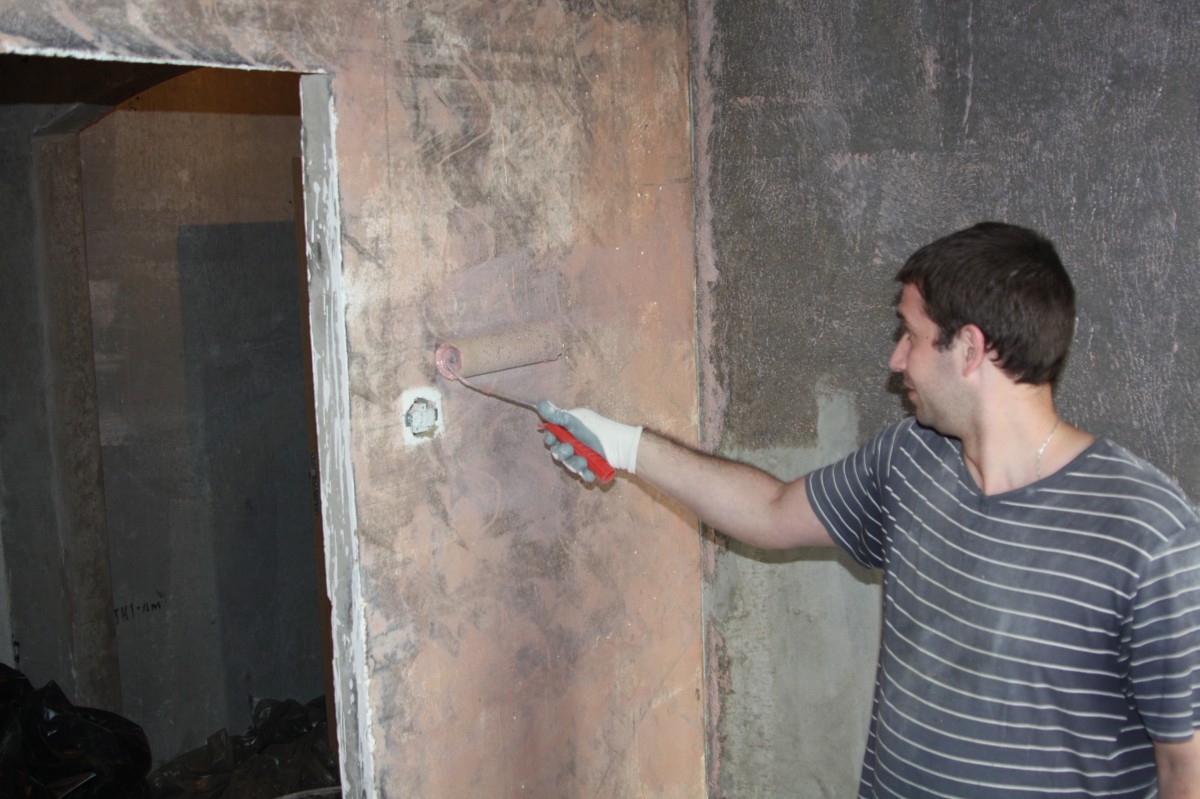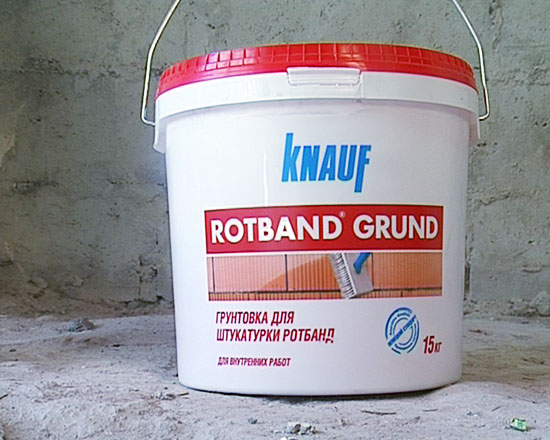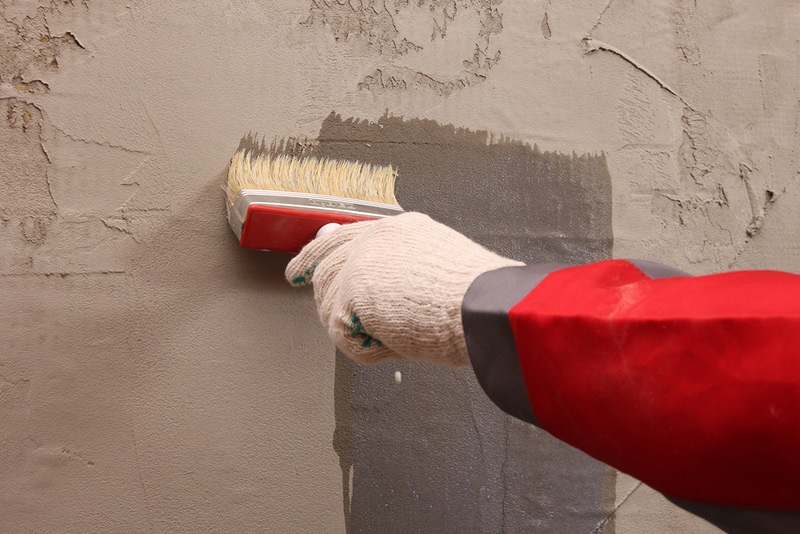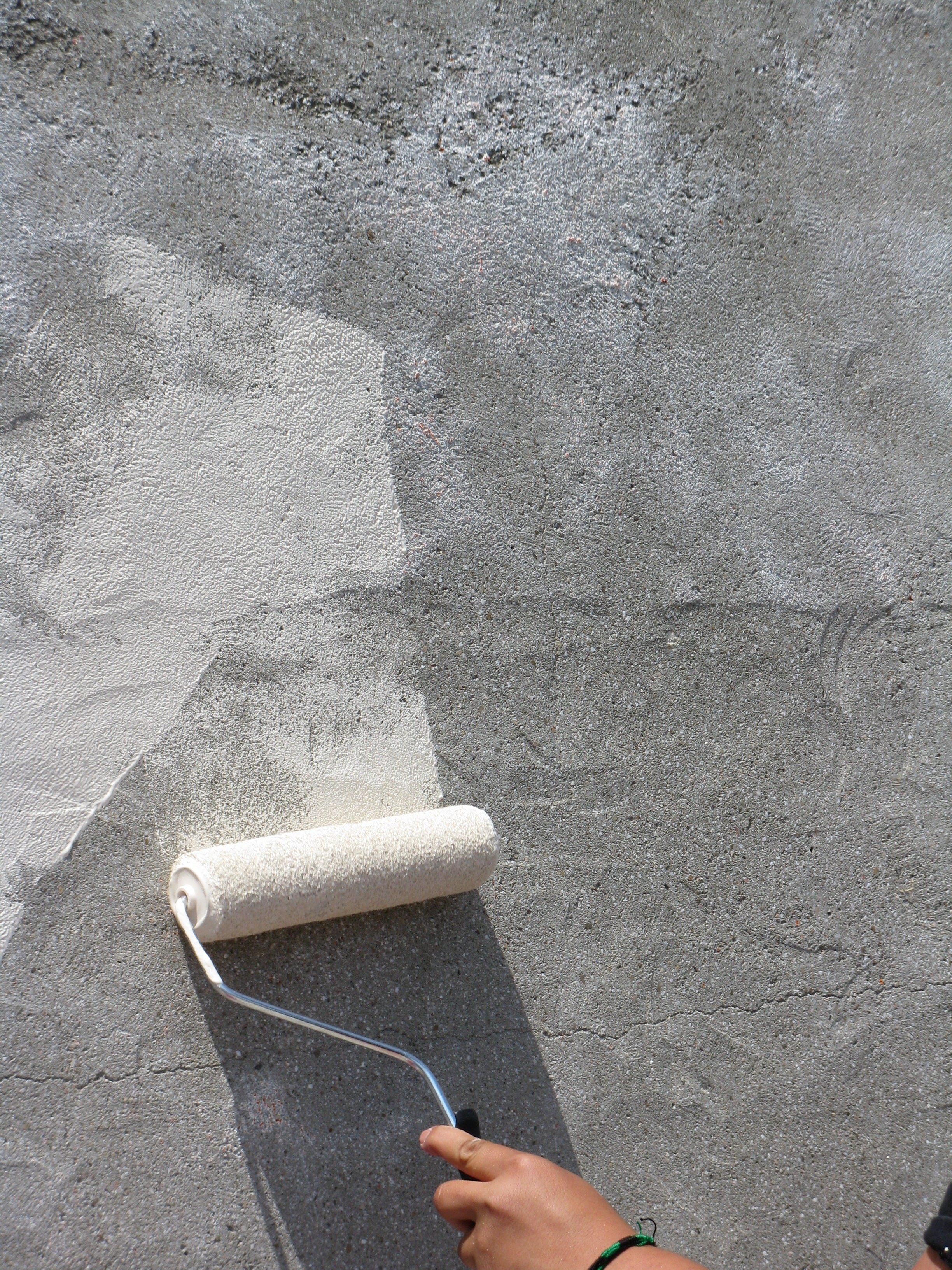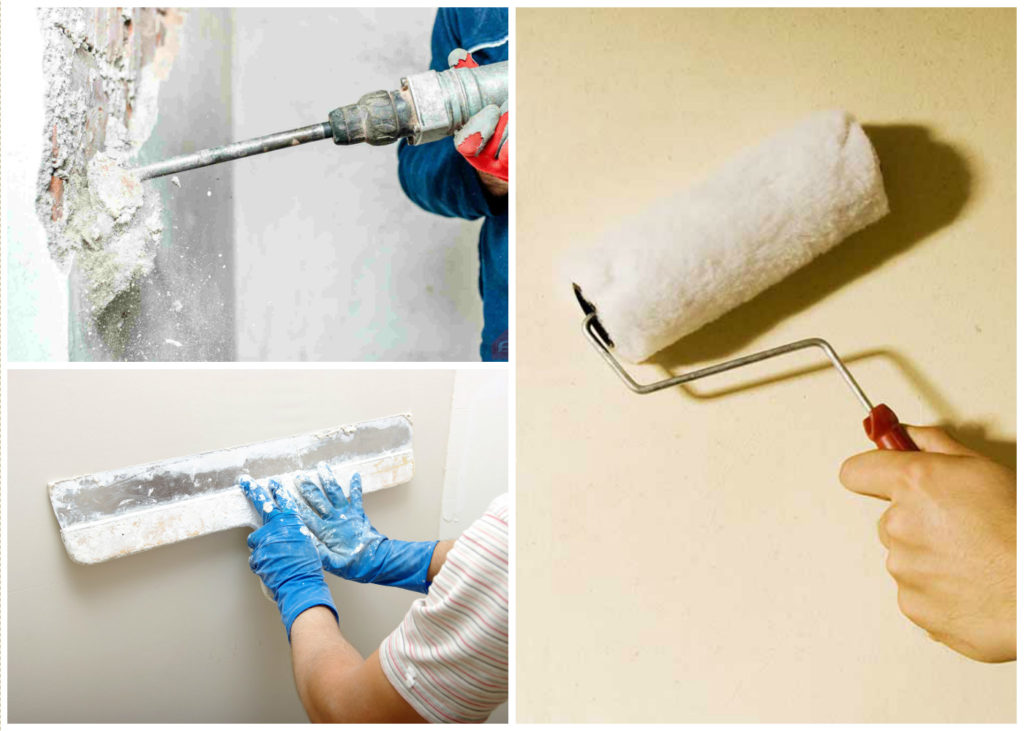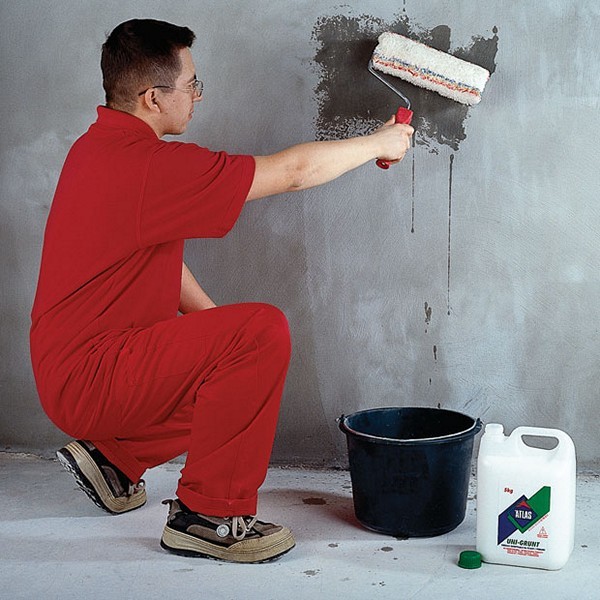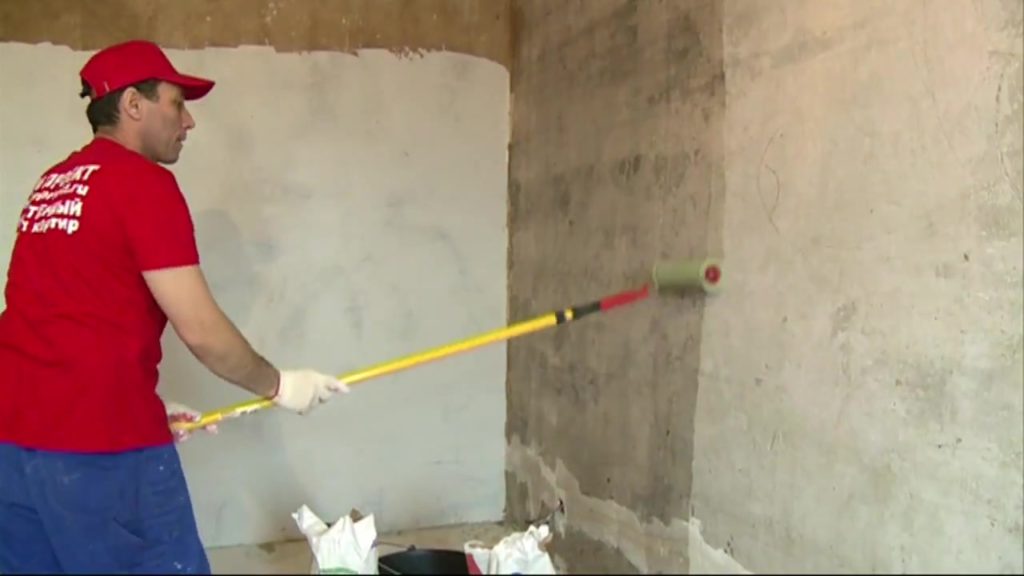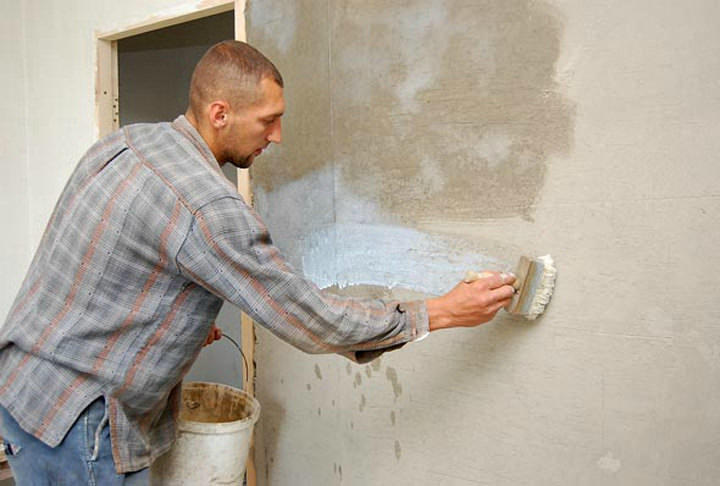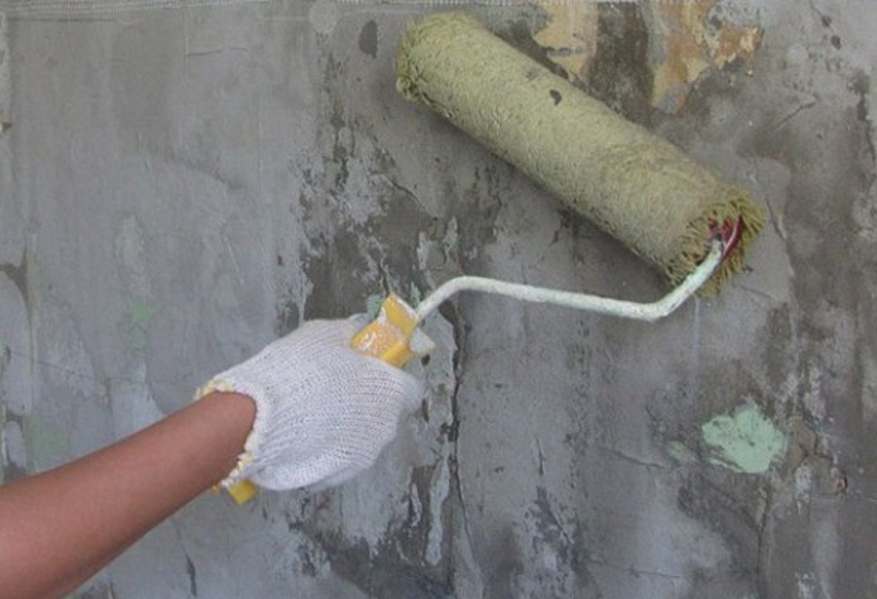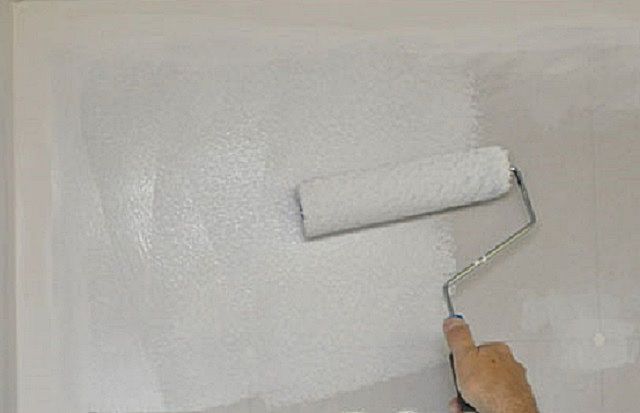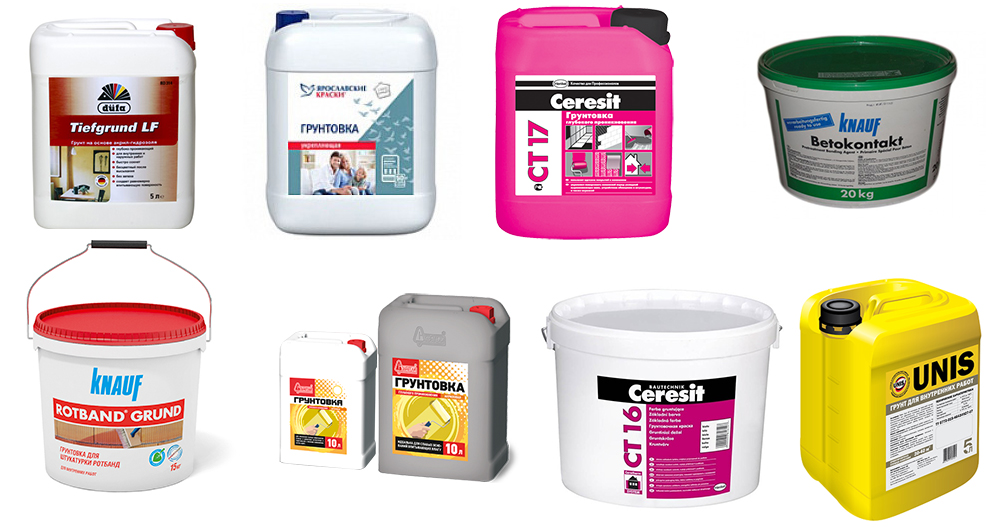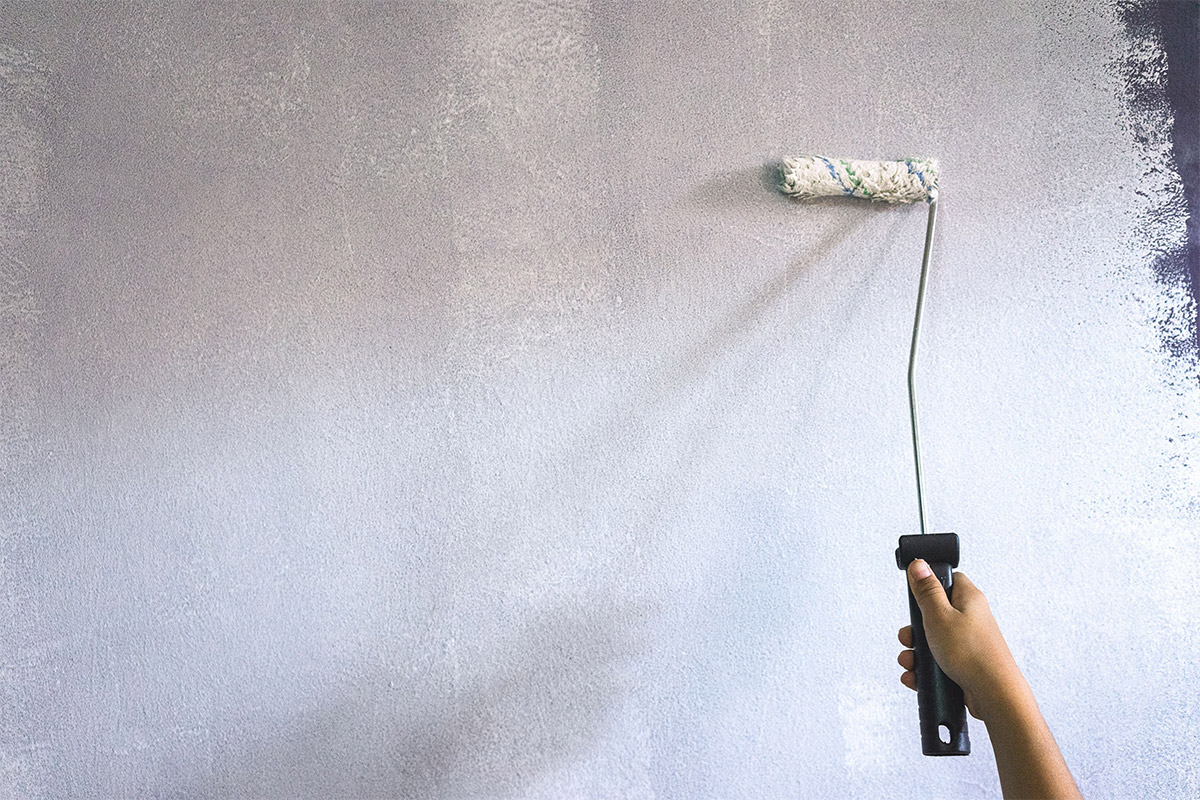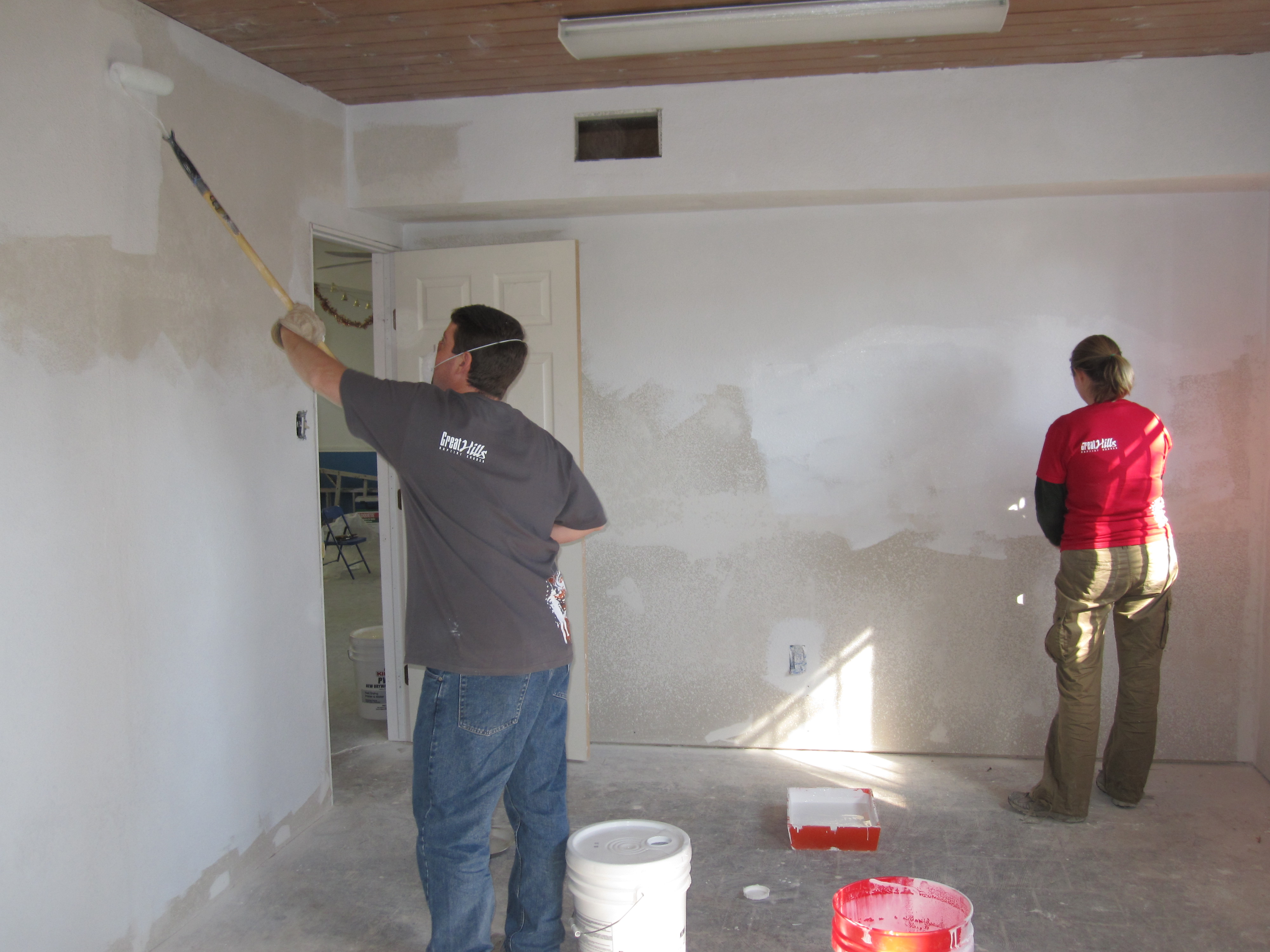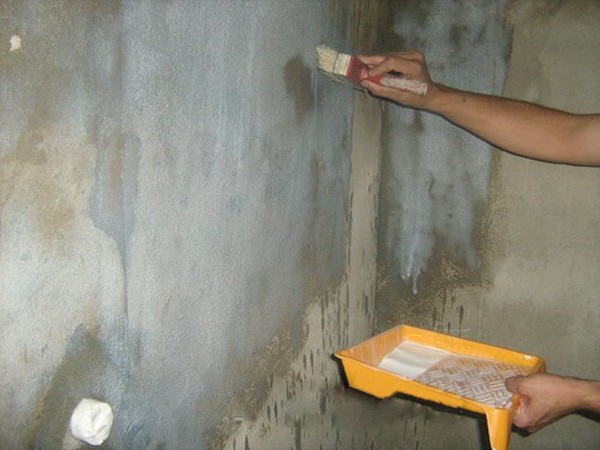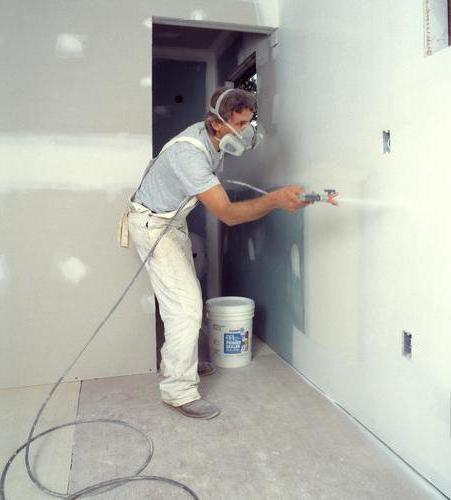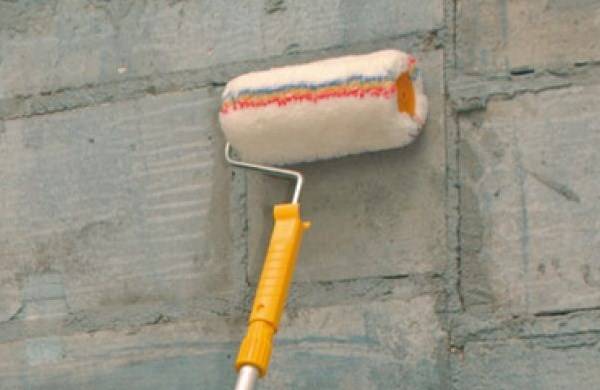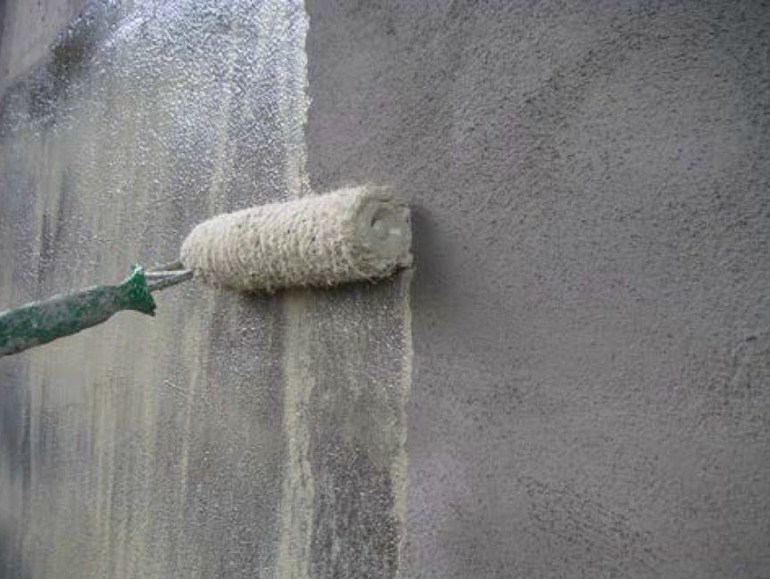No. 2. Types of wall primers by composition
Depending on the characteristics of the composition, the following main types of primers are distinguished:
- acrylic primer is the most versatile compound that can be used to coat wood, concrete, chipboard, brick, old and fresh plaster. Acrylic primer can be used on porous substrates, is odorless, dries quickly (about 5 hours), forms a "breathable" surface. The only drawback is that it is not suitable for priming metal surfaces;
- an alkyd primer is ideal for treating wooden surfaces that, under the action of such a primer, acquire a slightly swollen structure, due to which excellent adhesion is achieved with any finishing materials: from wallpaper and painting to cement-sand coatings. One layer of this primer dries for about 15 hours. The composition may contain substances that prevent the development of corrosion and the appearance of mold;
- glyphthalic primer is one of the few compounds that can be used on metal surfaces. It is also sometimes used for painting on wooden walls. The primer dries out within a day, but has a limitation - it is suitable only for relatively dry rooms, since it loses its properties with constant exposure to high humidity;
- perchlorovinyl primer is a versatile compound that can be used to process wood, brick, plaster and even metal. It dries quickly, and in summer at high temperatures one layer dries up in 1 hour. Inside residential premises, this primer is not used due to its toxicity, but it may be suitable for external work;
- polyvinyl acetate primer consists of polyvinyl acetate dispersion and latex, can be applied to any surface and is used only as a base for polyvinyl acetate paint. Dries quickly, up to 30 minutes;
- phenolic primer is used as the first coat in the treatment of metal and wood structures. The composition dries up to 15 hours, is used for outdoor work only;
- polystyrene primer also cannot be used for interior work; it is used to treat plastered and wooden surfaces;
- aluminum plasters, as a rule, are used for treating wooden surfaces and additionally protect them from fungal attack;
- epoxy primers are suitable for metal and concrete. They protect metal from corrosion, and allow concrete to better adhere to the finish;
- shellac primers are used to treat wood surfaces and prevent the release of resins;
- mineral primers are made on the basis of gypsum, lime and cement, used for surface treatment of concrete and brick walls. Such a soil dries from 3 to 24 hours, which depends on the thickness of the layer and the nature of the surface material.
You can also find universal primers on the market. The very name of these compositions suggests that they can be used for application to any surface. They are used to perform minor construction and repair work, when the necessary composition with specific qualities was not at hand, and also sometimes for the treatment of surfaces consisting of different materials.
Types of primers
Today, the following types of material can be found on sale.
Acrylic primer
The polymer composition provides high adhesion, strengthens well, protects the base from water and chlorine-containing compounds. It is applied to ordinary concrete covered with plaster or paint.The finished layer is able to successfully withstand external negative influences, has a stable shade, and has antiseptic properties.
It dries quickly - up to 5 hours, so it can be used with a tight deadline for work. Easy to apply, improves adhesion. As a result, the pores are reliably sealed, there is no concrete dust, steam and air freely circulate through the finished layer. Safe for health. It is undesirable to use it for processing the facade parts of buildings.
Firming primer
Refers to the type of soil intended for surfaces with low absorbency. The composition contains quartz sand. As a result, the surface is slightly rough, which ensures the best application of a decorative coating or arrangement of a self-leveling floor.
Forms a waterproof layer with waterproofing properties. Quickly penetrates into walls, ceilings, floors, closing small pores, strengthening, dust-free concrete surface, increasing the quality of adhesion to decorative materials.
For outdoor work
Deep-penetrating frost-resistant compounds do not form cracks and do not contribute to the delamination of finishing materials at low temperatures. They are usually made on the basis of silicate or acrylic and are intended for mineral surfaces.
Primers penetrate the interior of the substrate, reliably seal the pores, preventing the penetration and absorption of moisture. So even with a sharp onset of cold weather, ice does not form in the thickness of the walls, which means that destruction does not occur.
Depending on the type of surface to be treated, the following concrete primer for outdoor use is offered:
Trading networks offer compounds for creating smooth surfaces well protected from moisture for finishing work: laying ceramic tiles, painting, plastering. There are soils with silicate filler for processing foam concrete, cinder blocks with a cellular structure. The mixture penetrates deeply into the smallest pores and closes them.
Verified brands: Reesa Tiefgrund, Weber, Tikkurila, Caparol.
For interior work
Such soil is usually odorless. For work, a latex, alkyd or universal acrylic variety is suitable. If you plan to decorate rooms with high humidity, then it is worth purchasing special formulations with antiseptic characteristics. A primer for absorbent surfaces increases the adhesion of the surface to mortar, glue, paint.
For concrete floor
A deep penetration primer is the best option for such a floor. It is absorbed into the concrete base, making it durable, while leaving the structure of the building material porous. A one-component polyurethane primer mix for concrete helps to reduce the looseness of the surface.
Today, two types of floor primers are produced, differing in the method of application: universal and specialized, which in turn are divided into mixtures for external or internal use. The former are in high demand, but are inferior in their properties and quality to the latter.
Some special solutions provide an increased degree of protection against stress, mechanical stress and aggressive external environment.
Types of solutions for purpose and requirements for future coverage:
- strengthening;
- acrylic;
- polyurethane;
- epoxy.
If there is looseness or damage on the surface of the concrete base, the mixture should be applied until it stops absorbing. The resulting film will indicate that the problem concrete area is well saturated.
Types of primers for mineral materials
For the processing of these materials, acrylic primers are used. They dry for 2-3 hours and do not have a pungent odor. Polyvinyl acetate solutions dry for half an hour and can be used for interior work.Then a PVA composition is applied to the surface.
For finishing plastered external surfaces, polystyrene compounds containing toxic solvents can be used.
The primer penetrates deeply into the concrete structure and strengthens porous materials, but is not suitable for loose surfaces. Adhesion is enhanced by the small latex segments included in the composition.
How to do the job correctly with your own hands?
You must first take care of the inventory. For priming the walls, you will need: a roller or brush, a spatula, paper or a sanding machine, a chemical solution and the primer itself itself.
It is necessary to completely get rid of the old coating, otherwise the primer will have no effect.
To do this, use a grinder or sandpaper; in some situations, chemical solutions cannot be dispensed with.
If there are irregularities on the surface to be treated, they must be corrected. Depending on the size of the wall flaws, either a putty or a thick primer is used (recesses no more than 15 mm). The second option is bad because it will take about a week to dry.
Most often, after purchase, the product is already ready for use, otherwise it is necessary to follow the instructions attached to the product.
Apply the primer over the entire surface with a roller, if the consistency is thick, you can use a spatula. After applying the first layer, you will need to take a break for a while until the wall dries.
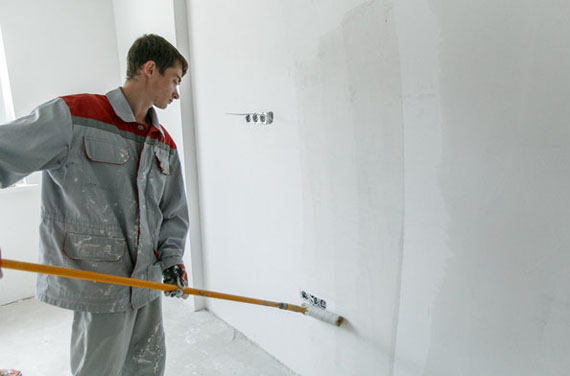
The question immediately arises: how long can you continue to work? The answer depends on the type of coating used, deep penetration primers dry for 24 hours, in the case of acrylic coatings - up to 10 hours.
Priming is finished when the finish coat is dry. Then you can start finishing work.
Some, when carrying out finishing work, ignore the priming stage, but this is an erroneous position. So that the new walls stand for a long time, and the owners do not have to start re-repairing soon, the primer is an integral component.
How to primer walls: video tutorial.
How to properly prime
The priming process can be divided into preparatory and main stages:
During preparation, it is necessary to grind the surface, remove dust, dirt, mold from it. If necessary, dictated by the instructions for the primer-composition, the wall must be degreased: for this, acetone or similar solvents are used
During the preparatory work, it is important to observe proper ventilation of the room and the temperature regime within the range of 5-25 ° C.
The main stage of priming is to dilute the required amount of the composition and apply it to the walls.
How many times
The primer is usually applied in two layers, the first of which is thicker, and the second is necessary to better strengthen the surface.
At the same time, it is important to dry each layer of the primer for the time recommended on the package (usually several hours)
How to primer
Depending on the porosity, the walls can be primed with a brush or roller.
Each method has its own advantages.
The brush allows you to work on unplastered surfaces, while the roller gives a uniform layer without smudges, on which less soil is consumed.
How long can you paint
The minimum drying time for the primer must be found in the instructions for the specific composition, it usually ranges from 4 hours.
If repair work allows, then it will not be superfluous to let the primer soak for a day.
In addition, if the primer-composition was applied to plaster or putty, then the subsequent painting should be carried out only after all layers of the finish have completely dried.
The drying of the primer can be slowed down by open containers filled with water in the room, so it is better to remove buckets of water, remnants of diluted soil and other liquids from the room.
Soil types
There is a wide range of primers on the modern construction market.
By the type of solubility, primers are:
- based on organic acids (alkyd resins, polyurethane, latex);
- water-dispersion, which can be diluted with water (acrylic, latex, silicate, silicone);
- mineral (based on lime, gypsum, cement).
By appointment, they are:
- universal;
- specialized;
- antifungal;
- insulating;
- strengthening.
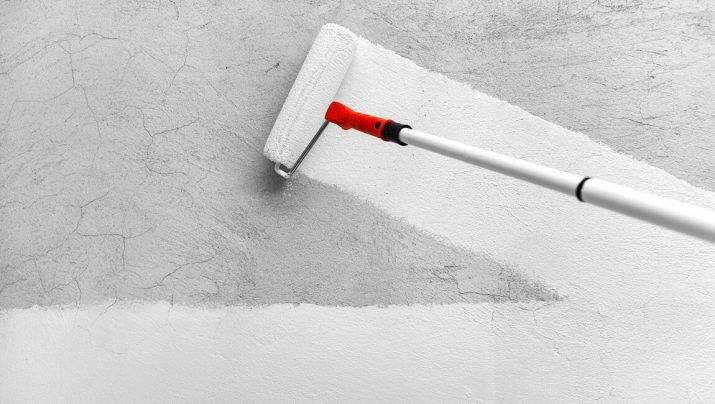
Consistency matters. Usually the transparent composition is more liquid. The white analogue has a higher viscosity and density. The consistency determines the penetrating ability.
Liquid transparent compounds strengthen the outer layer of the wall and bind dust. Among these varieties, you can find solutions with special additives, through which alkalis can be quenched. The price of such primers is reasonable.
Compared to their denser counterparts, their penetrating power is 25% higher. The disadvantage of such a primer is the heterogeneity of the application: when processing the surface, it is not visible which area is already covered with a primer. As a result, the part on which there is more soil gives itself away with gloss. Inhomogeneity is dangerous because the adhesion when gluing wallpaper will be different.

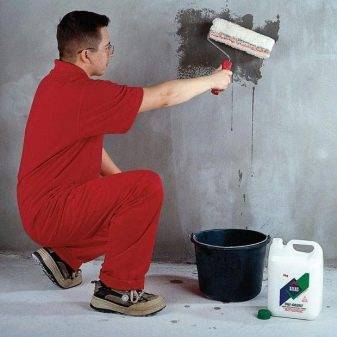
Thick primers, unlike liquid varieties, are able to adjust the surface of the walls before wallpapering. They eliminate small irregularities, have an antistatic effect, quench alkalis, creating a smooth film. Filling the micropores, they paint the wall surface, so that the entire treated surface is visible during processing.
Its penetrating power is lower, such a primer is good for walls with a homogeneous structure without visible defects. The smoothness that this primer creates is convenient for plaster and thin wallpaper, as well as photo wallpaper. Such a primer will not work for liquid wallpaper.
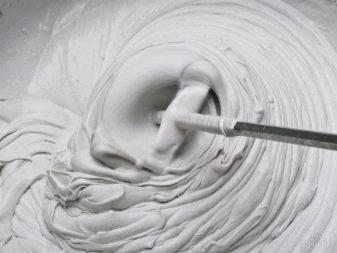
Varieties of compositions
Impregnating compositions, first of all, are distinguished by their purpose:
- For surfaces with a wood structure (chipboard, fiberboard, OSB, wood), liquids from organic solvents based on alkyd resins are suitable. They are often used to process surfaces painted with oil paints.
- Universal impregnation is a water-soluble product based on silicone, silicate or acrylic. Such primers are applied to brickwork, concrete walls, plasterboard cladding, wood surfaces.
- In construction, special coatings with cement and polyurethane, shellac or epoxy resins are least often used.
It is the universal liquids that are more suitable for surface treatment before plastering. And coatings based on any solvents cannot be used to impregnate walls made of polyurethane foam, polystyrene foam. For each base, use a different type of primer. By their structure, vertical fences can be divided into wooden, mineral, hydrophobic, metal, absorption bases, each of which should be studied separately in order to know which means are best suited for impregnation.
- Mineral. These are brick, concrete or plasterboard walls. To impregnate them, you need to use universal means. For concrete bases, you can take the "Betonkontakt" mortar, which increases the adhesion of concrete. The primer for brick walls is also suitable for cement surfaces. Deep penetration impregnations cannot be used in the case of dense substrates - a polymer film forms on the surface due to the fact that the composition cannot penetrate deeper. This will cause the plaster to peel off. Typically, a deep penetration tool is capable of saturating the base a couple of centimeters deep.
- Metallic. It is better to choose coatings for special purposes. For example, a rust converter, which is often used as a primer on metals, is suitable.The liquid not only cleans from rust stains, but also provides increased metal adhesion.
- Wooden. This is not only ordinary wood, but also a surface made of fiberboard, OSB, chipboard. It is better to choose impregnations with fungicidal and fire retardant additives, which will increase fire resistance, prevent the occurrence of fungal growth and mold in the wood under the plaster layer.
- Hydrophobic. Ceramic tiles, laminates and glass have such qualities as hydrophobicity. It is better to choose a primer based on polymer resins if you want to treat walls with such a structure. Often, such a primer is used as preparatory layers before textured painting or under decorative plaster.
- Absorption. Such surfaces include walls made of aerated concrete and foam blocks. Here, a layer of primer will obviously not be superfluous either, it will increase adhesion, prevent water from penetrating into the walls. A strong waterproof film forms on the surface of aerated concrete and foam concrete blocks.
Types of facade primers and their properties
Each variety has its own purpose. Therefore, it is recommended to read the instructions before starting work and even before purchasing. The documents always describe with which one or another primer composition for outdoor use is best combined when it gives the best result.
The composition of such varieties has become widespread:
- Anti-corrosive;
- Microbicidal;
- Acrylic;
- Alkyd;
- Deep penetration. The technical level of strength is higher compared to analogs;
- Covering;
- Regular.
 Each variety has its own purpose.
Each variety has its own purpose.
Composition of primer mixtures
When buying deep penetration facade primers, one cannot do without studying the packaging with the information given on it. It contains not only instructions for use, but also a detailed description of the technical characteristics. This applies to consumption, other similar information.
Facade primers are divided into varieties, including by composition:
Two-component polyurethane. They are considered universal. They are combined with concrete and plaster, other surfaces of various types. They guarantee high adhesion and strengthening properties of the existing base. Even when applied to wet surfaces, they do not impair the protective properties. This is an important characteristic;
Alkyd, synthetic origin. These are enamels and paint-primers, which are used only for metal or wood. For ceramic tiles, such a base is recognized as the best;
Acrylic primers for plaster facades, with suitable polymers as a base. They are also considered universal formulations. Includes water-dispersible group and deep penetration. No toxic substances in the composition, with the ability to dry quickly. Dilution with water is required to achieve a suitable concentration. They differ in their low consumption per 1 square meter. Especially suitable if the base is brick;
Mineral. With a composition that includes gypsum or cement, lime. With a thick consistency that can smooth out any unevenness on the walls
It is important to take into account the combination with certain materials when selecting. Quartz sand also requires this.
Puttying
When the walls are plastered, they must be putty, whether they be external or internal surfaces. You need to select a putty depending on the type of plaster or the type of building materials used for the construction of the building. For decorative plaster to be durable and hold tight, you need to choose the right primer mixture, otherwise the layer of plaster will completely or partially flake off. To prevent this from happening, it is necessary not to use a putty consisting of highly viscous substances, as well as those that absorb moisture poorly, for example, you should not use oil putty, glue, as well as soils based on alabaster.
Preparation of concrete walls for plastering
The process of preparing interior walls made of concrete for plastering consists of the following stages:
- The old coating is removed in the form of fragile plaster, whitewash, paint (in which cases it is possible to apply plaster on old paint, we recommend reading here);
- Defects of concrete walls are determined. If there are nodules, they are cut down with a hammer and chisel. Massive chips and deep cavities are sealed with a cement-sand mortar in a ratio of 1: 3, if necessary, steel meshes are used for reinforcement;
- On smooth walls, notches are made with a hammer and chisel, the maximum step of the notches is 10 cm;
- If a hidden wiring device is needed, wire strokes are made;
- The concrete surface is cleaned. A brush and water are used to remove dust and dirt. Wall treatment can be carried out using compressed air or a strong jet of water, which significantly speeds up the cleaning process;
- A primer is applied to the wall surface.
Notches on the concrete wall
We'll talk more about the types of primers for concrete walls later.
Priming concrete walls before plastering
Priming of concrete walls is necessary in order to:
- Reducing the absorption of water from the solution into the concrete base;
- Protecting the concrete wall from the formation of mold and mildew;
- Increasing the strength of the protective (surface) concrete layer;
- Dedusting the concrete surface. The primer binds dust particles and makes the substrate clean;
- Improving the adhesion of the plaster to the concrete base.
Applying a primer to a concrete wall
Next, we will consider how to prime concrete walls in front of plaster:
- For smooth concrete surfaces, concrete contact primers are ideal. After application, the composition fills the pores in the concrete, and a rough layer with high adhesion forms on the surface, which contributes to good adhesion to the future plaster. We recommend formulations of the following manufacturers: Feidel Betokontakt, Knauf Betokontakt, Prospectors Beton-Kontakt.
- Old concrete surfaces can be reinforced with a deep penetration primer specially formulated for impregnating fragile substrates. Such a soil impregnates the top layer of concrete, thereby strengthening it and giving it the necessary strength. From manufacturers we recommend: Prospectors "Deep Penetration", AquaNova "Nova", Optimist acrylic "Deep Penetration".
Deep Penetration Prospector Primer
For the preparation of porous concrete surfaces (aerated concrete, foam concrete), primers are required that reduce the absorbency of the base, thereby preventing uneven setting of the solution. The following primers are perfect: Knauf Mittelgrund, Knauf Rotband Grund (for gypsum plasters), Ceresit CT 17, Toiler TR10.
Remember to follow the manufacturer's instructions when applying the primer to the substrate. As a rule, the primer must be shaken before application, and the application process itself must be carried out in several layers.
Installation of beacons and reinforcing mesh
If the old wall has drops of more than 10 mm, then it is necessary to install beacons before applying the plaster. Lighthouses are needed for even application of plaster in the same layer in thickness. It is better to use metal profiles as beacons.
Lighthouses on a concrete wall
If the thickness of the planned plaster is more than 20 mm, then it is necessary to additionally arrange a reinforcing mesh. The mesh is fastened to the wall using dowel-nails.
Next, you need to prepare the solution in accordance with the manufacturer's instructions. To avoid the formation of lumps, add water to the dry mixture, and not vice versa.
No. 3. Properties and purpose of the primer
Depending on the room in which the primer will be used, compositions with specific properties can be selected for surface treatment:
deep penetration primer - an option for loose and insufficiently durable surfaces.The composition is able to perfectly strengthen such a wall and significantly reduce paint consumption. Often such compositions are used to impregnate a surface finished with plaster, but this does not interfere with the use of a primer for application to drywall, brick, foam concrete and aerated concrete. If you need a reliable primer for wallpaper, especially for their heavy types, then you can safely stop your choice on such compositions. It is not recommended to use a deep penetration primer for treating surfaces with poor moisture absorption capacity;
antiseptic primer for damp rooms (bathroom and kitchen) contains special substances that prevent the appearance and development of fungus, has water-repellent properties and can even reduce the inflammability of the base. Such formulations provide such high adhesion that the surface of the material and the finish adhere very strongly, and no microorganisms can seep into the joint.
In the bathroom, it is recommended to apply a primer in three layers;
anti-corrosion compounds are indispensable for the treatment of metal surfaces, prevent the formation of rust, increase the service life;
adhesives and non-contact primers are used when it is important to achieve the maximum level of adhesion to a smooth and completely non-absorbent surface (concrete, previously painted walls). They contain sand or acicular quartz particles to increase adhesion.
These primers can be used to treat the backing before gluing heavy wallpaper.
Manufacturers should indicate on the packaging what type of surface the primer is intended for, where it is recommended to use it, and what the approximate consumption of material will be for different types of surfaces.
Experts advise, when choosing a primer, pay attention to the products of those manufacturers whose finishing materials you use - as a rule, the products of one company go well
Do I need to prime before painting
The primer can be carried out with different compositions: paint, ready-made primer or concentrate, which is diluted according to the instructions. Also, solutions are marked relative to the surface to which they will be applied (wood, metal, plaster).
Water-based
Water emulsion is not the cheapest finishing material, therefore, preliminary priming of the walls will significantly save on paint consumption.
The primer applied under the water-based paint reduces the hygroscopicity of the base, which leads to a more even distribution of the paint on the surface, strengthening the coating, and increasing the wear period.
The primer under the water emulsion is applied with a brush, preferably in one layer, which should ideally cover all the unevenness of the wall, but at the same time not form uneven accumulations of soil. After complete drying of the primer-composition, which takes 5-7 hours, the water-based paint is applied in two layers.
Silicate
Silicate paints are sold dry; for coloring, the mixture must be diluted with water and used as soon as possible, until the paint has lost its properties. Therefore, a pre-primer on a silicate base is of great importance for the speed and quality of painting.
Special primers reduce the toxicity of the alkali contained in silicate paints and strengthen mineral surfaces to extend the life of the paint up to 10-15 years.
Acrylic
Priming before acrylic painting has an important feature: the composition must be applied to highly abrasive surfaces, from smooth surfaces it will gradually creep even together with the paint.
Therefore, before applying the primer, the surface of the wall must be treated with a stiff brush or coarse sandpaper in order to artificially create grooves and roughness.
In turn, the primer solution perfectly fixes the particles of the coating, leveling the adhesion and absorbency of the wall, which allows the acrylic paint to lie in an even and durable layer.
Oil
Oil paint is one of the most highly adhesive, even without a pre-primer coat. Priming increases the strength of the oil coating, making it smoother and less porous. However, often oil paint, applied without a primer-composition, itself acts as an unsurpassed material for finishing work, as it adheres well to the surface.
When applying oil paint for the first time, the use of a primer solution is not necessary. In the case of secondary, it is worth making a choice in favor of a special composition "over paint", which will save the time required to remove the old layer.

